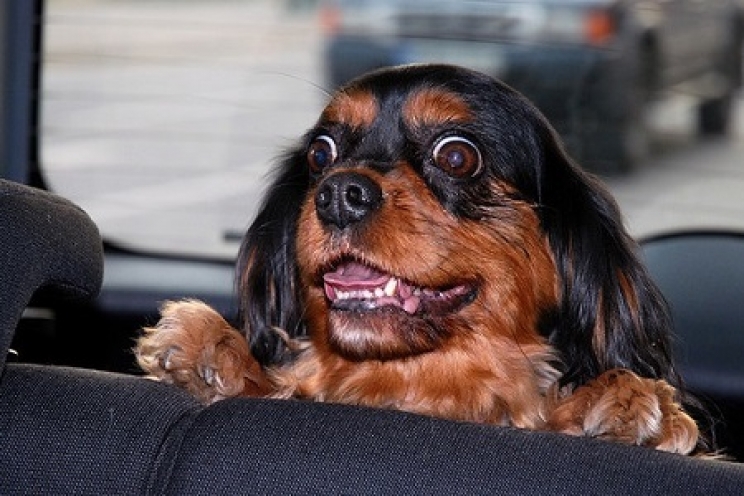The car is a necessity for most of us during daily chores. Traveling by car is often the only solution to go to work, for domestic errands, to reach places quite far from home and, why not, to take a nice trip. In some cases, a simple gesture, such as driving, can become problematic if we decide to bring the dog or cat with us. This aspect becomes even more difficult if our friend just can't deal with the fear or anxiety of car travel. Let's see what are the causes of this situation and what to do if the dog or cat does not want to get in the car.
Problems related to transport
A very important factor to keep in mind is that almost all cats hate cars. This is because of their very particular personality, as we all know well. For some of them, the mere sight of the pet carrier can trigger panic.
For dogs, the situation is usually different. Most dogs, in fact, are quite enthusiastic when traveling by car. This happens especially if the owner has used the car for other activities rather than just going to the vet, but also to reach pleasant places, for example a countryside or a dog area.
However, it may happen that the car is automatically associated with something negative, so the dog or cat will refuse to get in, becoming dangerous for themselves and for those driving.
Causes that can trigger their refusal:
- We only used the car to get to the vet's office;
- It is the first time you get into the car;
- Something bad happened during previous trips, such as an accident or sudden braking;
- Suffering from motion sickness;
- Cannot stand places that are too closed, such as the pet carrier;
- Tends to threaten other animals in the car.
Tips
If the dog or cat does not want to get into the car for some unknown reason and they are tense and worried during the journey, we should be able to identify the source of the discomfort.
An animal suffering from motion sickness will need specific advice, which you can find in the detailed article. We remind you that the symptoms of carsickness can generate a strong discomfort in the dog and not only physical, but also mental, so let's contact our veterinarian to evaluate the problem in more depths.
If, on the other hand, we believe that the discomfort is caused by a behavioral problem, we can act through some precautions.
- We get the animal used to getting into a car from an early age;
- We use the car for pleasant experiences, for example to reach a beautiful countryside and let him run freely;
- We try to stay calm while driving, talking to him naturally;
- We avoid turning up the volume of the radio;
- For the first few times, we bring with us an object of the dog, for example a blanket or a towel, which he will associate with the positive experience of the car ride;
- Lets stop often on the way;
- Do not let him eat for a few hours before getting him into the car;
- We bring water with us to offer him during the stops;
- We use the travel accessories (pet carriers, cages, separation nets and safety belts for dogs) according to the needs and personality of our pet. By doing this, we will ensure greater safety for us and our friends during the journey and ensure that we remain in full compliance with the regulations on the transport of animals;
- We place special ramps or platforms to facilitate the entrance.
We must communicate that moving by car can also be a positive experience. In fact, in most cases, the dogs and cats that refuse to get in the car are precisely those who have not accumulated other "automotive" experiences other than visiting the vet.
We then stimulate the positive association, using the car more often, enriching the moment with many pleasant stimuli, which can include caresses, as well as reward snacks, his favourite blanket and the desired destination of the animal’s choice.










